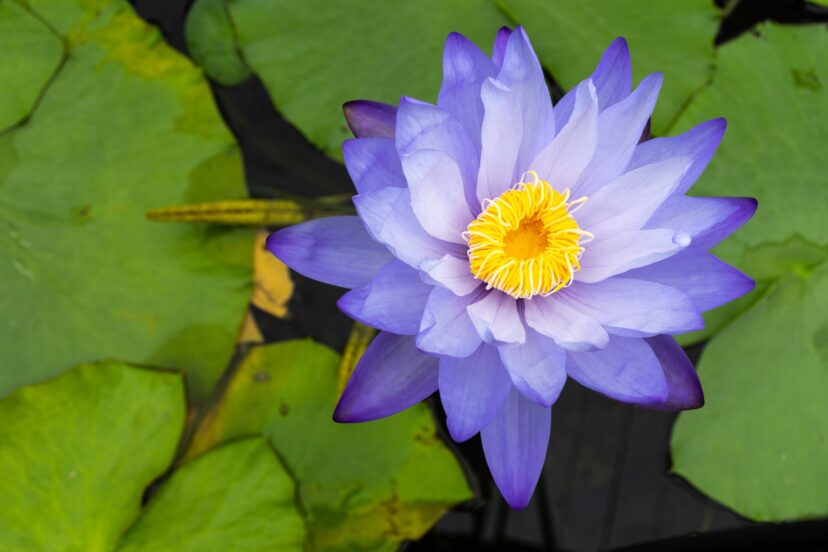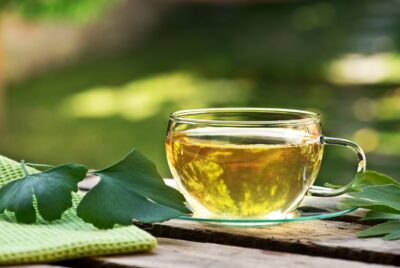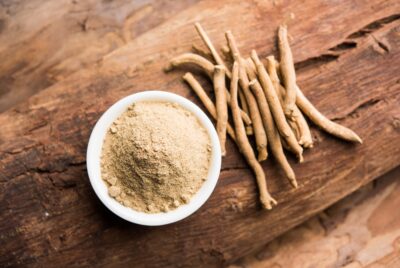Blue Lotus Tea: Benefits and Brewing Tips
Have you ever tried blue lotus tea? If not, you’re in for a treat! This unique tea has a rich history and numerous benefits. In this article, we’ll explore everything you need to know about blue lotus tea, from its historical roots to its modern-day uses.
What is Blue Lotus Tea?
Blue Lotus Tea is an herbal infusion made from the petals and flowers of the Blue Lotus plant (Nymphaea caerulea), which is also known as the Egyptian water lily. This plant is native to Egypt and other parts of North and Central Africa but can also be found in regions with warm climates worldwide, such as Southeast Asia.
Made from blue lotus flowers it is known for its mild, slightly sweet, and floral flavor. It is traditionally consumed for its calming effects, believed to help reduce stress, anxiety, and promote relaxation. Some people also use it to enhance sleep quality and improve emotional well-being.
Blue Lotus Tea Benefits
Blue lotus tea isn’t just beautiful; it offers a range of health benefits that make it a favorite among herbal tea enthusiasts.
Relaxation and Stress Relief
One of the most notable benefits is its ability to promote relaxation. The natural compounds in the flower help reduce stress and anxiety.
Enhances Sleep Quality
Struggling with sleep? Blue lotus tea might be your answer. Its calming effects can help you unwind and improve the quality of your sleep.
Boosts Cognitive Function
Drinking blue lotus tea can also enhance your cognitive abilities. It helps improve focus, clarity, and overall mental performance.
Supports Emotional Health
Feeling down? This tea can support emotional well-being by promoting a sense of peace and happiness.
Historical Background
Historically, the blue lotus flower has been revered for its spiritual and medicinal properties, especially in ancient Egyptian culture. It was often associated with the gods and used in religious ceremonies and rituals, symbolizing the sun, rebirth, and enlightenment. The plant’s significance is also evident in its depictions in ancient Egyptian art, where it is shown as a symbol of creation and resurrection.
Chemical Composition and Effects
Blue lotus contains several active compounds, including nuciferine and apomorphine, which are believed to contribute to its psychoactive and calming effects. Nuciferine acts as a dopamine receptor blocker, which can induce relaxation and mild euphoria, while apomorphine has been used in traditional medicine for its sedative properties.
Cultural Significance
In addition to its historical use in Egypt, Blue Lotus also holds cultural significance in other regions. In Buddhism and Hinduism, the blue lotus symbolizes purity, enlightenment, and the victory of the spirit over the senses. It is often used as a meditation aid and in spiritual practices to enhance mindfulness and connection with the divine.
Overall, Blue Lotus Tea is more than just a beverage; it is a drink steeped in history, culture, and tradition, offering a unique experience that combines both the physical and the spiritual. Whether you’re looking for a natural way to relax or seeking a deeper connection to ancient traditions, Blue Lotus Tea is a fascinating and beneficial option to explore.
How to Make Blue Lotus Tea
Preparation is simple, but a few tips can enhance your experience.
Selecting the Right Blue Lotus Flowers
The quality of your tea depends on the quality of the flowers. Look for organic, dried blue lotus flowers for the best results.
How is Blue Lotus Tea Consumed?
To make Blue Lotus Tea, the dried petals of the flower are typically steeped in hot water for about 10 to 15 minutes. The tea can be consumed on its own or with natural sweeteners like honey or agave syrup to enhance its flavor. It can also be combined with other herbs like chamomile or lavender for added benefits.
Brewing Methods
Brewing is a simple yet customizable process that can enhance your experience depending on the method you choose. Here’s a deeper look into different brewing techniques:
How Much Blue Lotus to Make Tea?
The recommended amount is typically 1-2 tablespoons of dried blue lotus flowers per cup of hot water. This amount can be adjusted based on personal preference and the desired strength of the tea. For a standard preparation:
- Mild Flavor: Use 1 tablespoon of dried blue lotus petals for a lighter, more subtle taste.
- Stronger Flavor: Use 2 tablespoons of petals for a more pronounced and robust flavor.
- If you are preparing a larger quantity or a concentrated brew, you can increase the amount proportionally. For example, if you’re making a full pot of tea (about 4 cups), you might use 4-8 tablespoons of dried flowers depending on the strength you prefer.
When experimenting with the amount, it’s also a good idea to start with a smaller quantity and adjust according to your taste preferences and desired effects
Traditional Hot Brew
The most common way to enjoy Blue Lotus Tea is by making a traditional hot brew. To do this:
- Boil Water: Start by boiling fresh, filtered water. The ideal temperature should be around 195-205°F (90-96°C), just below boiling.
- Steep the Flowers: Place about 1-2 tablespoons of dried blue lotus flowers into a teapot or teacup. Pour the hot water over the flowers.
- Steeping Time: Let the tea steep for 10-15 minutes. The longer you steep, the stronger and more pronounced the flavor will be. Adjust the time to suit your taste preferences.
- Strain and Serve: Strain the flowers out and pour the tea into your cup. You can add honey, agave syrup, or a slice of lemon to enhance the flavor.
This method brings out the tea’s mild, slightly sweet, and floral notes, making it a soothing beverage perfect for relaxation.
Cold Brew
Cold brewing Blue Lotus Tea is another method that offers a different flavor profile—smoother and less bitter compared to hot brewing. To cold brew:
- Prepare the Flowers: Add 1-2 tablespoons of dried blue lotus flowers to a pitcher or jar.
- Add Cold Water: Fill the container with cold, filtered water.
- Steeping Time: Let the mixture steep in the refrigerator for 6-12 hours. The longer it steeps, the stronger the infusion.
- Strain and Enjoy: Strain the flowers and enjoy your tea cold. This method is particularly refreshing during warm weather and can be paired with ice and a splash of fruit juice for a summer treat.
Tinctures and Concentrates
For those looking for a more potent form of Blue Lotus Tea, tinctures and concentrates can be an option:
- Concentrated Brew: You can create a concentrated brew by steeping a larger amount of flowers (around 3-4 tablespoons) in a smaller volume of water. This will produce a stronger, more intense flavor and effects.
- Tinctures: Blue lotus tinctures are made by soaking the flowers in alcohol to extract the active compounds. A few drops of this tincture can be added to hot water or directly under the tongue for a potent experience.
Combination with Other Herbs
Blue Lotus Tea can be combined with other herbs to enhance its effects or create new flavor profiles. Common combinations include:
- Chamomile: Enhances the calming and sleep-inducing effects.
- Lavender: Adds a floral aroma and enhances relaxation.
- Peppermint: Adds a refreshing note and can aid digestion.
When combining herbs, simply add them to the brewing process alongside the blue lotus flowers and steep together.
Final Tips for Brewing
- Experiment with Steeping Time: Depending on your taste preferences, you can adjust the steeping time for a milder or stronger brew.
- Add Sweeteners or Citrus: Natural sweeteners like honey or agave and a slice of lemon can elevate the tea’s flavor.
By exploring these different brewing methods, you can tailor your Blue Lotus Tea experience to suit your personal preferences and enjoy its unique benefits in various ways.
Best Time to Drink Blue Lotus Tea
Timing can enhance the benefits you get from blue lotus tea.
Morning Routine
Start your day with a cup of blue lotus tea to boost your mood and cognitive function.
Evening Relaxation
Enjoying a cup in the evening can help you unwind and prepare for a restful night.
During Meditation or Yoga
Blue lotus tea is perfect for accompanying meditation or yoga, helping to deepen your practice.
Tips for Enjoying and Maximizing the Benefits of Blue Lotus Tea
1. Start with Quality Ingredients
Quality is key when it comes to enjoying Blue Lotus Tea. Always choose organic, dried blue lotus flowers from reputable sources. This ensures that you’re getting a pure product free from contaminants like pesticides. High-quality blue lotus flowers will have a more potent aroma, flavor, and beneficial properties, enhancing your overall tea experience.
2. Experiment with Steeping Times
Blue Lotus Tea can vary in strength and flavor depending on how long you steep the flowers. For a milder tea, steep the flowers for about 5-7 minutes. If you prefer a stronger, more intense flavor and effects, let the tea steep for 10-15 minutes. Adjusting the steeping time allows you to tailor the tea to your personal taste and desired potency.
3. Enhance the Flavor with Natural Sweeteners
While Blue Lotus Tea has a naturally mild and slightly sweet flavor, adding natural sweeteners can enhance the taste. Honey, agave syrup, or maple syrup are excellent choices that complement the floral notes of the tea. Start with a small amount and adjust to your preference. Natural sweeteners not only improve the flavor but also add their own health benefits, making your tea experience even more enjoyable.
4. Combine with Other Herbs
Mixing Blue Lotus Tea with other herbs can create a unique and beneficial blend. Chamomile, lavender, and peppermint are great options that pair well with blue lotus. Chamomile and lavender enhance the calming effects of the tea, while peppermint adds a refreshing note and aids digestion. Experiment with different combinations to discover your perfect blend.
5. Try Cold Brewing for a Refreshing Twist
Cold brewing is a great way to enjoy Blue Lotus Tea, especially on hot days. This method results in a smoother, less bitter tea. Simply add the dried blue lotus flowers to cold water and let it steep in the refrigerator for 6-12 hours. The slow infusion process extracts a different flavor profile, making it a refreshing and hydrating drink.
6. Create a Relaxing Tea Ritual
Turn your tea-drinking into a mindful practice by creating a tea ritual. Set aside time each day to prepare and enjoy your tea in a quiet, comfortable space. Focus on the process of brewing and savoring each sip, using this time to relax and reflect. Incorporating elements like soft music, candles, or deep breathing exercises can further enhance the calming effects of your tea ritual.
7. Be Mindful of the Dosage
While Blue Lotus Tea is generally safe, it’s important to be mindful of the dosage, especially if you’re new to it. Start with a small amount, such as one tablespoon of dried flowers per cup of water, and see how your body reacts. You can gradually increase the amount if needed. This cautious approach helps you avoid any potential side effects, such as mild dizziness or nausea.
8. Use Fresh Lemon for a Citrus Twist
Adding a slice of fresh lemon to your Blue Lotus Tea can brighten the flavor and add a refreshing citrus twist. The acidity of the lemon complements the floral notes of the blue lotus and can also enhance the tea’s natural detoxifying properties. This is a particularly delightful addition when you’re looking for a more vibrant and invigorating drink.
9. Store Your Tea Properly
To maintain the freshness and potency of your Blue Lotus Tea, store it in an airtight container away from direct sunlight, heat, and moisture. Proper storage ensures that the tea retains its aroma, flavor, and beneficial properties for a longer period, providing you with a consistently enjoyable tea experience.
10. Listen to Your Body
Finally, always listen to your body when consuming Blue Lotus Tea. Pay attention to how it makes you feel, and adjust the amount you drink accordingly. Everyone’s body reacts differently to herbal teas, so it’s important to find what works best for you. If you experience any discomfort or unusual symptoms, consider reducing the amount or frequency of consumption.
By following these tips, you can enhance your Blue Lotus Tea experience, making it a more enjoyable, beneficial, and personalized part of your daily routine.
Potential Side Effects and Precautions
While generally safe, it’s essential to be aware of potential side effects.
Understanding Possible Reactions
Some people might experience mild side effects like dizziness or nausea.
Consulting with Healthcare Providers
If you have any health conditions or are pregnant, consult your doctor before consuming blue lotus tea.
Other calming teas to help with sleep, anxiety, and stress:
These teas are great for calming the mind and body, making them perfect for stress relief and better sleep. You can enjoy them on their own or in blends designed specifically for relaxation.
Chamomile
- One of the most well-known calming teas, chamomile has natural sedative properties and is often used to promote sleep and reduce anxiety. It contains apigenin, an antioxidant that binds to certain brain receptors to help decrease anxiety and promote relaxation.
Lavender
- Lavender is famous for its calming aroma and soothing properties. Lavender tea is often used to reduce anxiety, stress, and restlessness. It can also help improve sleep quality.
Valerian Root
- Valerian root is a popular herb for promoting better sleep and reducing anxiety. It works as a mild sedative and can help relax the nervous system, making it easier to fall asleep.
Passionflower
- Passionflower is known for its ability to reduce anxiety and improve sleep quality. It increases levels of GABA in the brain, which can reduce stress and promote calmness.
Peppermint
- Although peppermint tea is more commonly associated with digestive benefits, it also has mild relaxing effects. It can help ease tension, reduce headaches, and improve sleep quality.
Ashwagandha
- Another adaptogenic herb, ashwagandha, is known for its stress-relieving properties. It can help balance cortisol levels (the stress hormone) and support a calm, balanced mood.
Rooibos
- Rooibos is naturally caffeine-free and is often used to reduce stress and promote relaxation. It’s rich in antioxidants and can help balance mood and support restful sleep.
Green Tea (low-caffeine varieties)
- Green tea contains the amino acid L-theanine, which promotes relaxation without drowsiness. Opt for low-caffeine green tea or decaffeinated versions if you’re sensitive to caffeine, as it can still provide calming effects.
Jasmine
- Jasmine tea, often made with a green or white tea base, is well-known for its fragrant, calming aroma. It’s great for soothing nerves and relieving anxiety while also offering gentle relaxation.
Mullein
- While commonly used for respiratory support, mullein tea also has calming properties that can ease anxiety and help with sleep.
Final Thoughts
Blue Lotus Tea is a remarkable herbal infusion that offers a unique blend of historical significance, cultural richness, and potential health benefits. Revered since ancient times, particularly in Egypt, this tea is more than just a beverage; it’s a link to the past and a source of modern wellness. Whether you’re seeking relaxation, enhanced cognitive function, or emotional balance, Blue Lotus Tea provides a natural and soothing option. Its mild, floral flavor and calming effects make it a wonderful addition to any wellness routine. Embrace this ancient tradition and discover the benefits of Blue Lotus Tea for yourself.
FAQs
Can I drink blue lotus tea every day?
Yes, but start with small amounts to see how your body reacts.
Is blue lotus tea safe during pregnancy?
Consult your healthcare provider before consuming.
Does blue lotus tea have caffeine?
No, it is naturally caffeine-free.
Can children drink blue lotus tea?
It’s best to consult with a pediatrician before giving it to children.
How does blue lotus tea taste?
Blue lotus tea has a mild, slightly sweet, and floral flavor.
Can I use blue lotus tea for skin care?
Yes, blue lotus tea can be used as a soothing facial rinse or in homemade skin care products.
Is blue lotus tea the same as blue tea?
No, blue tea often refers to butterfly pea flower tea, which is a different plant.
How should I store blue lotus tea?
Store it in a cool, dry place away from direct sunlight to maintain its freshness.
Can I drink blue lotus tea if I’m taking medication?
Consult your healthcare provider to ensure there are no interactions with your medication.



